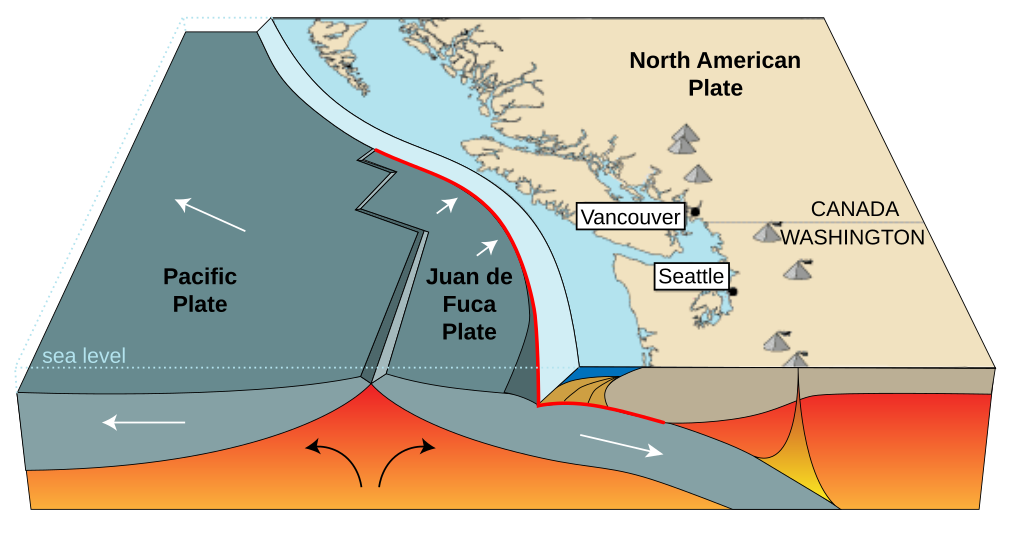It’s a phrase that hangs in the air in British Columbia, often spoken in hushed tones: “The Big One.” It’s a source of deep, underlying anxiety for many, but it’s often poorly understood. What is the Cascadia Subduction Zone, and what does it actually mean for your family?
The goal of this article isn’t to cause alarm. It’s to do the opposite. By replacing vague anxiety with clear understanding, you can move from a place of worry to a place of confidence. This guide will break down the science into simple terms and provide the clear, actionable perspective you need to feel prepared.

What Exactly Is the Cascadia Subduction Zone?
Imagine two massive conveyor belts meeting each other. One is thick and continental (the North American Plate), and the other is thinner and oceanic (the Juan de Fuca Plate). For centuries, the oceanic plate has been slowly sliding, or “subducting,” underneath the continental plate.
But right now, they are stuck.
For hundreds of years, a section of these plates off the coast of Vancouver Island has been locked together, unable to move. While they are locked, immense pressure and strain are building up, like a tightly coiled spring. When that pressure eventually becomes too much, the plates will suddenly slip, releasing a staggering amount of energy.
That release of energy is what is known as a megathrust earthquake.
What Would a “Big One” Actually Mean for BC?
The primary impact of a major Cascadia earthquake would be a prolonged and powerful shaking. Unlike the short, sharp jolts we sometimes feel from smaller local quakes, a megathrust event could last for several minutes.
The most important thing to understand is what happens after the shaking stops. A major event would cause widespread disruption to the services we rely on every day:
- Infrastructure Damage: Roads, bridges, and buildings would be significantly damaged.
- Utility Outages: Power, water, natural gas, and phone lines would likely be out for days, if not weeks.
- Tsunami Risk: For coastal communities, the sudden movement of the seafloor would generate a tsunami, making immediate evacuation to high ground a critical action.
This is precisely why emergency management officials across the province recommend that every household have the resources to be self-sufficient for a minimum of seven days.
From Knowledge to Action: Your Next Step
Understanding the science behind the Cascadia Subduction Zone is the first step. But knowledge alone doesn’t keep your family safe. The next, most crucial step is to channel that understanding into a concrete, actionable plan.
This is often where people get stuck. The sheer volume of information can lead to “preparedness paralysis”—the feeling of being so overwhelmed that you do nothing at all.
That’s the exact problem OurSafetyPlan.ca was designed to solve.
A generic checklist can’t account for your family’s unique needs. Our service transforms this knowledge into a hyper-personalized strategy. We guide you through a simple process to create a plan that considers your family size, your specific location, your medical needs, and even your pets.
If you’re ready to move from anxiety to action, we’re here to give you the clarity and confidence you need.
